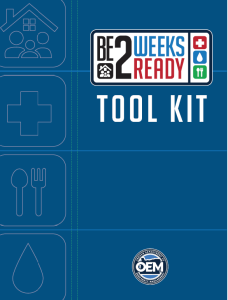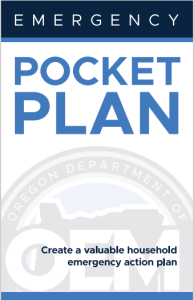Emergency Preparedness
Get Prepared
Hazards in Oregon
Oregon faces many extreme weather events. Therefore, it’s essential for individuals and communities to understand the risks and prepare for the critical period after a disaster. By staying informed about local hazards, we can take steps to protect ourselves, minimize losses, and recover more quickly. For example, knowing what to expect allows for better emergency planning and response. To learn more, visit the Oregon Department of Emergency Management’s Hazard and Preparedness page.
- Wildfires – Visit the State of Oregon’s Wildfire Dashboard to track active fires throughout the state.
- Extreme Heat – Find cooling centers and heat-related resources throughout Oregon using 211info.
- Winter Storms – Find winter and severe weather resources throughout Oregon using 211info.
- Floods – Learn the difference between flood watches and warnings.
- Earthquakes – ShakeAlert is an earthquake detection tool, operated by the U.S. Geological Survey (USGS)
- Tsunamis – Stay up to date on Tsunami warnings, advisories, watches, and threats with NOAA’s Tsunami Warning System.
Be 2 Weeks Ready – Use Oregon Emergency Management’s (OEM) toolkit to prepare for emergencies and create a personal plan. In addition, being 2 Weeks Ready means having a plan and enough supplies for everyone in your household to survive for at least two weeks after a disaster.
Build A Kit – After an emergency, you may need to survive on your own for several days. Therefore, being prepared means having your own food, water and other supplies to last for several days. In essence, a disaster supply kit is a collection of basic items your household may need in the event of an emergency. Additionally, don’t forget to include mobility and personal care items in your kit.
Plan ahead. Stay safe.
Pocket Plan – First, create and practice your personal emergency action plan. This workbook not only helps you gather key details about household members, including any functional needs, but also provides space for contacts, insurance, meeting places, and other vital information. Furthermore, once the plan is complete, ensure that every household member has access to it.
OR – Alert – To stay informed, sign up for emergency notifications. First, use your zip code to find your local alert system in Oregon, which will direct you to the appropriate website to register. If that’s not an option, you can alternatively visit your county sheriff or emergency management site to sign up or update your information. In addition, you can download the Everbridge app or simply text your zip code to 888777 to register anonymously.
Emergency Response
2-1-1 Info – Use the location search to find local resources for any emergency throughout Oregon. If you need further help, call 2-1-1 or 1-866-698-6155 for additional assistance. Moreover, language interpreters are available to support non-English speakers.
OEM – The Oregon Department of Emergency Management provides response and recovery information including mutual aid resources, emergency operations, and the state 9-1-1 program.
FEMA – The Federal Emergency Management Agency provides resources and information for those affected by natural disasters.To stay informed, download the FEMA mobile app for real-time weather alerts and disaster resources. In addition, you can apply for disaster assistance if you’ve been impacted.
Disability & Disaster Hotline – Specifically, the Partnership’s Disability & Disaster Hotline provides information, referrals, guidance, technical assistance, and resources to people with disabilities, their families, allies, and organizations. Moreover, it supports those assisting disabled disaster survivors and others seeking help with immediate and urgent disaster-related needs.Call the hotline.
Red Cross Disaster Relief – If you are in immediate need of help, please contact your local Red Cross or find an open shelter. The Red Cross Resource Directory is powered by findhelp, a social care network that connects people with free and reduced cost services in local communities.




